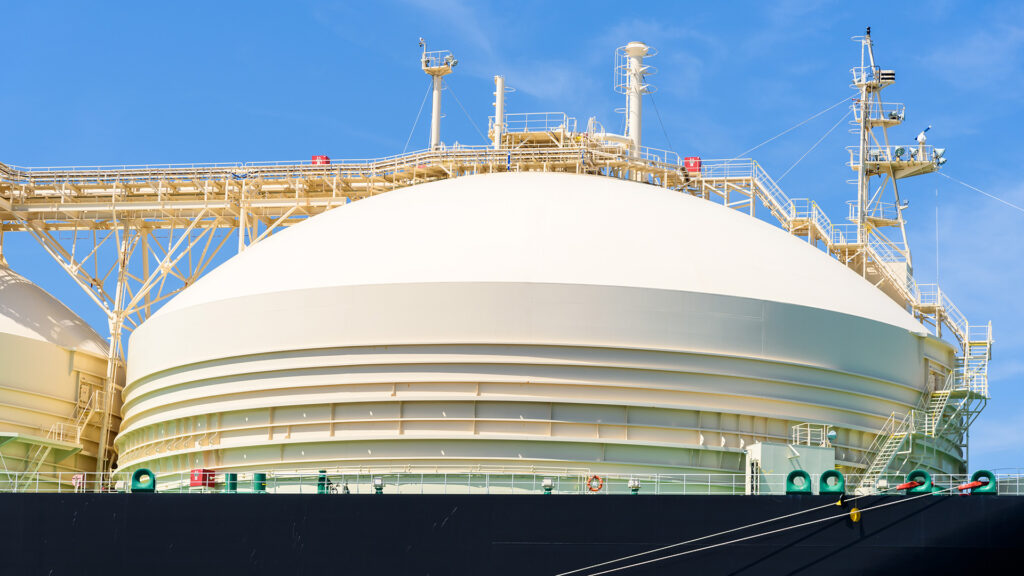



We are delighted to include four articles, from our offices in Singapore, London and Perth. Singapore Partner Dan Perera, Senior Associate Justine Barthe-Dejean and Associates Frazer Watt and Christopher Ong begin by considering whether it is time to rethink the traditional LNG SPAs and MSPAs, given the changes in the LNG market. London Partners Daniel Martin and David Savage give a timely update on the impact of the recent EU sanctions against Russia on LNG producers and traders. Next, we have an important article from Singapore Partner Peter Zaman, Senior Associate Jefferson Tan and Associates Christopher Ong and Farah Majid who have been advising LNG clients on how the forthcoming EU Methane Regulation will affect their business. Our final piece comes from newly promoted Partner Peter Sadler in Perth, who has been closely following the Western Australia DomGas inquiry and its potential impacts on both the domestic and global LNG markets.
We hope you enjoy reading the bulletin and welcome your comments and feedback.
Andrew Williams
Partner, London
The LNG market has evolved rapidly over the last decade or so. Technological developments have made both LNG liquefaction and receiving facilities more economical to construct, and longer sea voyages with less wasted boil-off are possible. An LNG spot market, with features of hub pricing and arbitrage opportunities has developed. Inevitably, this has led to more traders entering the market. Against this background, we ask: is it time for a re-think of the structure of LNG sale contracts? Do traditional long-term sale and purchase agreements (SPA) (or traded master sale and purchase agreement (MSPA)) terms still make sense today?
In the context of seaborne energy sources, LNG is a relatively new energy product. The earliest production facilities opened in the 1940s but the market for LNG as an energy source did not expand significantly until the 1990s. It is somewhat difficult to contemplate that the first commercial export of LNG from the US did not occur until 2016.
The early LNG market bore the following characteristics:
In recent years, however, we have seen the following trends emerge:
In short, the combination of these factors, and others, has supported the development of a LNG spot market, with LNG becoming an increasingly ‘commoditised’ product.
Given these developments, is it time for a re-think about some of the traditional LNG sale contract terms? Our view is that this is already underway, driven in part by the recent entry to the market of new, non-traditional participants – particularly traders.
LNG is typically sold under long term sale and purchase agreements (SPAs) or master sale and purchase agreements (MSPAs). We focus on SPAs in the table below, addressing certain traditional SPA terms and making the case as to why they may now be outdated in some circumstances. Many of the same themes apply equally to MSPAs.
No. |
Traditional SPA provision |
The case for change? |
| 1. |
Long term. SPAs have traditionally had terms of 15 to 30 years. They have been the ‘cornerstone’ of many LNG liquefaction projects and have been used for the purpose of obtaining a final investment decision (FID) – financiers want to know that the project will have guaranteed and stable income for many years before investing. |
SPAs entered into from 1995 to 2010 for projects that have been in operation since then will now be coming to an end. We are entering the ‘re-contracting’ phase. For existing production facilities, does there remain a clear need for replacement SPAs to have the same terms as the original SPAs, assuming financing of construction is no longer as relevant? We are seeing more optionality as to term – for example, 15+ year SPAs divided into shorter periods, with the parties being under no obligation to continue to sell and purchase at the end of each period unless the price for the next period is mutually agreed by a certain date. |
| 2. |
Fixed annual contract quantities. Again, LNG project financiers wanted certainty that revenue was guaranteed. SPAs therefore traditionally contained relatively rigid quantity requirements, with an ability to uplift or adjust downward within certain parameters only. |
In the market, we are now seeing more value being placed on optionality. Traders, in particular, will want to maximise their flexibility and the opportunity to arbitrage across suppliers. Fixed annual quantities are being fought over more keenly. |
| 3. |
Pricing and price review. Traditional SPAs were commonly pegged to Brent and a basket of other price references. They may also have included a fixed element. Price review clauses allowed parties to arbitrate whether the SPA pricing remained reflective of the market. |
Pricing is now capable of being agreed solely on the basis of index prices intended to match the market. Price review arbitrations may consequentially reduce in volume and eventually become a thing of the past. |
| 4. |
Take or pay/deliver or pay – LNG project financiers traditionally required that SPA buyers must either (i) take (and pay for) the LNG produced by the seller, or (ii) pay the seller liquidated damages. Again, this was to secure guaranteed revenue for the project under the SPA. However, the liquidated damages are invariably limited by reference to the SPA price for the cargo, not the prevailing market price. |
These liquidated damages regimes have led to some very unpalatable outcomes for a number of market participants. The market saw significant and rapid price movements in both directions during Covid and again in the early days of Russia’s invasion of Ukraine. Parties were able to default under their SPA intentionally and buy (or sell) cargoes on the open market for significantly less (or more) than the SPA price, in the knowledge that their liability under the SPA was limited to the SPA price only. They made huge profits through wilful defaults – and demonstrated that the traditional SPA take / deliver or pay regime is insufficient to compensate the innocent party in such circumstances. In MSPAs in particular, we are seeing increasing use of a “wilful default” carve out from liquidated damages regimes for failure to deliver or take. In any event, there may no longer be a clear need for liquidated damages if parties are re-contracting for an existing liquefaction facility, rather than seeking FID on a new project. |
| 5. |
LNG origin and destination. Traditional ‘point-to-point’ / tramline trading was reflected in SPAs with provisions entrenching the origin of the LNG and its destination. Limited options were available to change the origin of the LNG or divert a cargo to another destination so as to accommodate or optimise supply and demand, and diversion provisions often involved complex upside profit-sharing arrangements between the parties. |
With the expansion of a competitive LNG spot market and the arbitrage opportunities in a globalised network of natural gas sources and receiving facilities, parties to long-term sale arrangements are looking to inject more flexibility as to the origin and destination of their LNG. This trend reflects the increasing involvement of pure traders, as opposed to suppliers and end-users, that wish to arbitrage geographical markets and optimise their diversified portfolios. It is facilitated by the harmonisation in LNG specifications and ship-shore compatibility, and the multiplication of LNG receiving facilities. It is becoming more common for SPAs to provide for a range of base and alternative supply sources of LNG, including a mix of LNG and pipeline natural gas options where available. SPAs increasingly allow for a range of base and alternative destinations within the same region or within regions. The optionalities are reflected in the SPAs through increasingly complex annual delivery programme planning and vessel nominations and have knock-on effects on LNG prices and freight calculations. Increasing the LNG origin and destination optionalities requires parties to re-think their force majeure regimes (where optionalities provide alternative means of performance for a force majeure-affected party). It also requires parties to put in place robust sanctions and trade restrictions provisions to cater for the reduced control over the LNG’s end-destination. |
Many market participants are seeking more optionality and flexibility in their contracts than traditional SPAs provide. This reflects the approach of the growing number of traders entering the market, and the rapid development of the global spot market, commoditising LNG. As a consequence, there exists the risk that the liquidated damages regimes present in SPAs and MSPAs are in danger of being not fit for purpose, insofar as they incentivise wilful defaults in the face of rapid price fluctuations.
Now may be an opportune moment for market participants to take a step back and reconsider the terms of their LNG SPAs. Doing so is particularly important in the context of existing SPAs which are coming to end, and which are due for renewal. For traders of LNG under MSPAs, again, ensuring that the traded terms are aligned with prevailing market trends is critical. In order to control levels of incremental risk, this may require more than merely seeking to amend the base position under an MSPA in each confirmation notice.
Dan Perera
Partner, Singapore
Justine Barthe-Dejean
Senior Associate, Singapore
Frazer Watt
Associate, Singapore
Christopher Ong
Associate, Singapore
The EU’s 14th package of sanctions against Russia was published on 24 June 2024. Whilst it falls short of an outright prohibition on the import of Russian LNG by EU member states, it introduces a new Article 3r, which prohibits the provision of reloading services within the EU where those reloading services are for the purposes of transhipment operations of gas which falls within EU tariff code 2711 11 00. This is aimed at preventing the transfer of Russian origin gas to third countries via transhipment operations at EU ports.
“Transhipment operation” is defined to mean either (i) ship-to-ship transfer, which is a simultaneous unloading and reloading operation with direct transfer from one liquefied natural gas vessel to another liquefied natural gas vessel; or (ii) ship-to-shore transfer and reloading, which includes activities such as the unloading of liquefied natural gas from a vessel to a terminal tank, the stocking of liquefied natural gas into the tank, and the reloading onto a vessel; those activities can be commercialised as individual services or as bundled services.
There is a derogation which allows authorisation to be granted if the reloading is necessary for transport to an EU member state and the relevant member state has confirmed that the transhipment is used to ensure the energy supply in that member state.
There are associated prohibitions on technical assistance, brokering services, financing or financial assistance related to the above prohibition.
It is likely that enhanced due diligence requirements will be imposed in order to identify reloading services within the EU which are for the purposes of transhipment operations (and therefore potentially in breach of Article 3r).
While there is a wind down period (until 26 March 2025) for preexisting contracts, there is an immediate obligation to report on a monthly basis on actual volumes of imports of Russian origin LNG into the EU.
Finnish company Gasum has already announced that it will stop buying and importing Russian LNG from 26 July 2024, when specific provisions aimed at Finland and Sweden come into effect.1
The sanctions package also prevents new investments in and the provision of goods, services and technology to complete LNG projects under construction in Russia, with a short grandfathering period which permits the execution until 26 September 2024 of contracts concluded before 25 June 2024, or ancillary contracts necessary for the execution of such contracts.
The EU Commission’s Consolidated FAQs have not yet been updated to include any information about the EU’s 14th package of sanctions against Russia. When this update happens, more detail on their impact will be available.
HFW’s sanctions team is advising LNG clients in relation to the new measures.
Daniel Martin
Partner, London
David Savage
Partner, London
The European Union’s (EU’s) new Regulation (EU) 2024/1787 on methane emissions in the energy sector will create new compliance burdens on importers of LNG into the EU. Importers will need to have appropriate reporting mechanisms and contractual provisions in place to deal with them. These new compliance burdens are likely to be passed on to non-EU producers and traders. They will ratchet up over time and their impacts on LNG imported into the EU will only increase over time.
The EU has publicly announced its intention to take action to reduce methane emissions in both the European Green Deal1 and the Global Methane Pledge2. A key pillar of its plans to do so is the regulation on methane emissions in the energy sector, Regulation (EU) 2024/1787 (the “Methane Regulation”).3 Broadly, the Methane Regulation aims to improve transparency and reduce methane emissions from fossil fuel sectors in the EU and from fossil fuels imported into the EU.
The Methane Regulation has been approved by the European Parliament and the European Council and was published in the Official Journal on 15 July 2024. It will enter into force twenty days after publication (i.e. on 4 August 2024) and will have direct effect in all Member States. It applies in respect of three types of fossil fuels: coal, crude oil and natural gas. The focus in this article will be on natural gas, including LNG.
The Methane Regulation covers all stages of the LNG value chain other than its use by final customers and the stages of distribution networks immediately prior to receipt by final customers. This includes exploration (including inactive, plugged and abandoned wells), production, gathering, processing, transmission, distribution, underground storage and operations in LNG facilities.
The Methane Regulation generally imposes obligations on three types of entities:
It is critical to note that the obligations imposed on Importers are progressive and their implementation will be rolled out in phases, from 2025 to 2030. The overall impact will be an increase in the reporting burden on the Importer relating to the LNG that they are importing into the EU. The reporting burden will increase with each phase, as is illustrated in the table below.
Phases |
Applicable Starting point for the Reporting Obligation |
1st Reporting Deadline for the relevant Phase |
|
Phase 1 |
4 August 2024 |
5 May 2025 (and 31 May for every year thereafter) |
|
Phase 2 |
1 January 2027 |
31 May 2027 |
|
Phase 3 |
5 August 2028 |
31 May 2029 |
|
Phase 4 |
5 August 2030 |
31 May 2031 |
Broadly, Operators and Undertakings have a number of obligations in relation to LNG assets and/or activities in the EU:
The Methane Regulation sets out various penalties for non-compliance, including public warnings, confiscation of profits and fines of up to twenty percent of annual turnover. Importers can be subject to such penalties for offences including:
The Methane Regulation generally gives EU Member States significant discretion in imposing penalties for different types of offences, provided that they are effective, proportionate and dissuasive.
The Methane Regulation will have a significant impact, directly or indirectly, on EU importers and operators and non-EU producers and traders. All parties should start to prepare now in order to have the necessary procedures and contractual provisions in place to allow them to meet the relevant reporting requirements and, ultimately, to limit methane emissions from the LNG value chain.
Peter Zaman
Partner, Singapore
Jefferson Tan
Senior Associate, Singapore
Christopher Ong
Associate, Singapore
Farah Majid
Associate, Singapore
As reported in our last LNG Bulletin, a committee of the Parliament of WA has been tasked with conducting a review into the WA Domestic Gas Reservation (DomGas) Policy which could have implications for Australia’s export market as much as for its domestic market. The DomGas policy has three limbs:
Following the release of an Interim Report on 21 February 2024, which concluded that the DomGas policy was no longer fit for purpose,1 the eagerly awaited Final Report was due out in June 2024. However, that deadline has been extended to the end of year while the committee completes its review of the extensive evidence and submissions submitted by stakeholders.
Of all the possible interventions mooted in the Interim Report to fix the DomGas policy, one is attracting significant attention. That is, the lifting of the current ban on export of gas developed from on-shore and near-shore fields.
The production of gas from on-shore and near-shore gas fields in WA is regulated by the State Government (offshore gas fields are regulated by the Federal Government). They include gas fields located in the Perth basin, a historic on-shore region located approximately 350 km away from Perth that first produced hydrocarbons in the 1960s. The Perth basin is in the midst of a renaissance:
With one exception, gas produced from the Perth basin must be sold domestically. The biggest purchasers are utilities, aluminium, ammonia/ammonium nitrate, and lithium producers, and mining companies generally.
The exception to the export ban is a joint venture project between Mitsui (operator) and Beach Energy, the 250 TJ/day Waitsia Stage 2 Project.That project was granted an export licence for 5 years to justify the investment in the plant and equipment which, it is suggested,2 would have been far smaller if the export exception had not been granted. Earlier this year, the Waitsia Stage 2 Project sold its first cargo of LNG to bp, via a swap arrangement with the North West Shelf JV. (The North Rankin, Goodwyn, and Angel fields that supply the North West Shelf JV are declining. Accordingly, gas from the Perth basin is strategically important to the North West Shelf JV to keep their LNG trains at the Karratha Gas Plant operating at capacity until the Browse offshore gas field comes online (if it does).)
Other Perth basin producers, including Mineral Resources and Strike Energy, are agitating for the State Government to lift the export ban. The argument frequently made by the CEO of Strike Energy, Stuart Nicholls, is that Strike Energy’s shareholders suffer because it is not able to reap the benefits of higher international prices for its gas, while Strike Energy’s customers use Strike Energy’s gas to produce products such as ammonia/ammonium nitrate, that are sold on the international market to the benefit of their shareholders.
The counter-argument, put by the members of the DomGas Alliance (a representative group of large gas purchasers), is that there is sufficient domestic demand for gas at commercial prices and also that fields in the Perth basin often fail to meet resource expectations, so there is a risk all the gas from the fields is exported before the producer meets its domestic gas commitments.
Interested parties are keenly waiting for the release of the Final Report to learn whether the current ban on export of gas developed from on-shore and near-shore fields, including the Perth basin, will be lifted. In terms of anticipating the likely outcome, it is worth noting that the authors of the Final Report are members of a parliamentary standing committee. They are not members of the State Government, which will consider and action the recommendations in the Final Report, assuming those recommendations do not contradict the government’s policies. The Premier of Western Australia, Roger Cook, has publicly stated that he leans away from the idea that gas from the Perth basin should be exported. The State Government has “spoken to a range of customers who think that there is plenty of demand and capability of paying a reasonable price for that gas”.
A further update will follow once the Final Report is released.
Peter sadler
Partner, Perth




